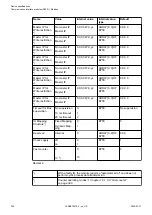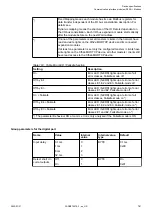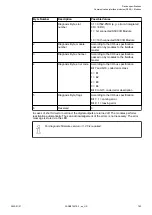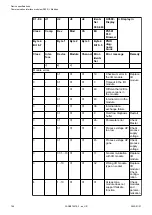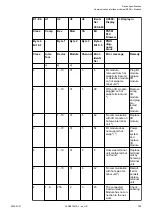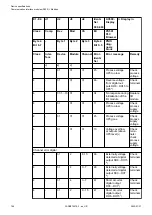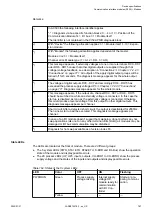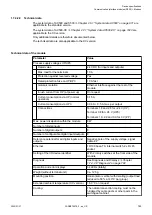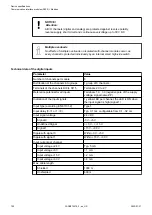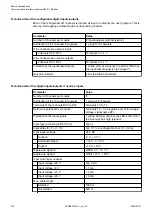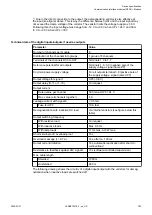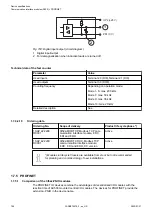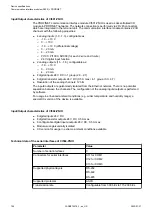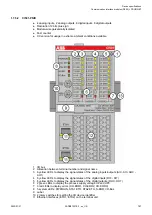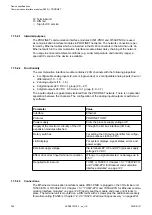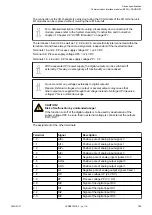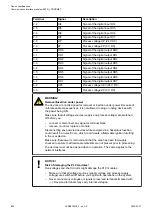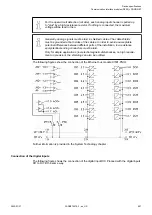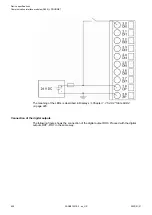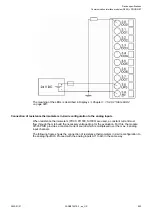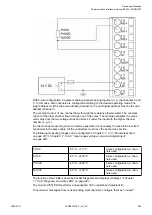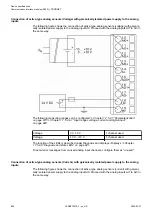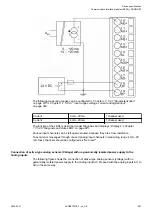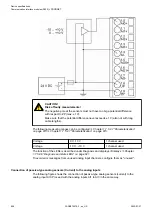
*) Due to the direct connection to the output, the demagnetizing varistor is also effective at
the input (see figure) above. This is why the difference between UPx and the input signal may
not exceed the clamp voltage of the varistor. The varistor limits the voltage to approx. 36 V.
Following this, the input voltage must range from -12 V to +30 V when UPx = 24 V and from
-6 V to +30 V when UPx = 30 V.
Technical data of the digital inputs/outputs if used as outputs
Parameter
Value
Number of channels per module
8
Distribution of the channels into groups
1 group of 8 channels
Terminals of the channels DC0 to DC7
Terminals 1.0 to 1.7
Reference potential for all outputs
Terminals 1.9...3.9 (negative pole of the
supply voltage, signal name ZP)
Common power supply voltage
For all outputs terminal 3.8 (positive pole of
the supply voltage, signal name UP3)
Output voltage for signal 1
UP3 (-0,8 V)
Output delay (0->1 or 1->0)
On request
Output current
Rated value per channel
500 mA at UP3 = 24 V
Max. value (all channels together)
4 A
Leakage current with signal 0
< 0.5 mA
Fuse for UP3
10 A fast
Demagnetization with inductive DC load
Via internal varistors (see figure below this
table)
Output switching frequency
With resistive load
On request
With inductive loads
Max. 0.5 Hz
With lamp loads
11 Hz max. at 5 W max.
Short-circuit-proof / overload-proof
Yes
Overload message (I > 0.7 A)
Yes, after ca. 100 ms
Output current limitation
Yes, automatic reactivation after short cir-
cuit/overload
Resistance to feedback against 24V signals
Yes (software-controlled supervision)
Max. cable length
Shielded
1000 m
Unshielded
600 m
The following drawing shows the circuitry of a digital input/output with the varistors for demag-
netization when inductive loads are switched off.
Device specifications
Communication interface modules (S500) > Modbus
2022/01/31
3ADR010278, 3, en_US
793


